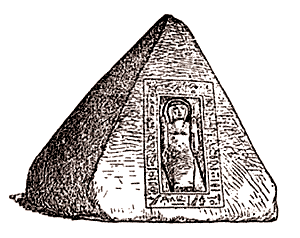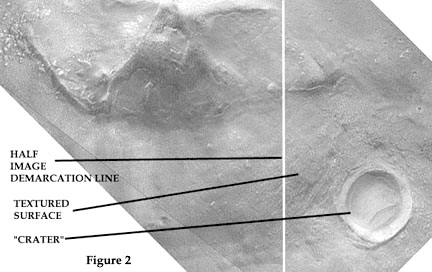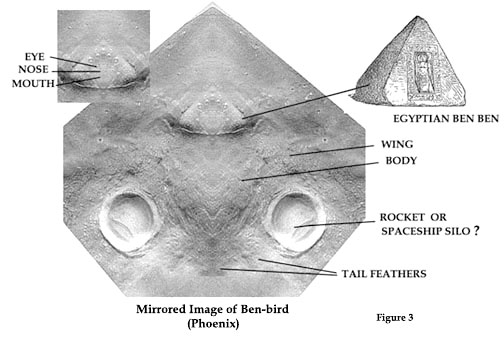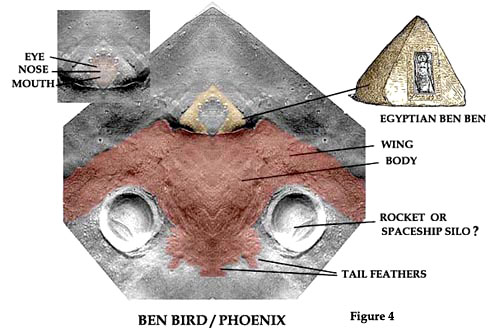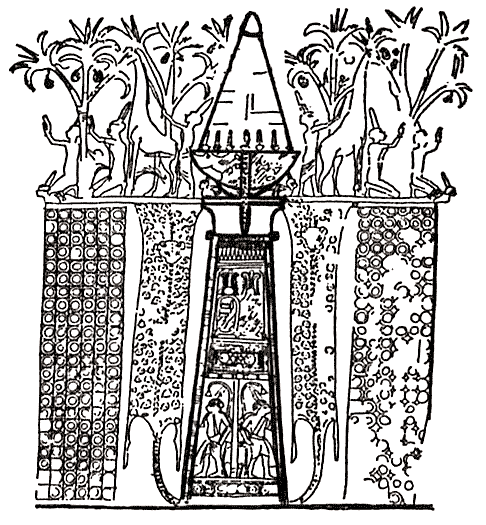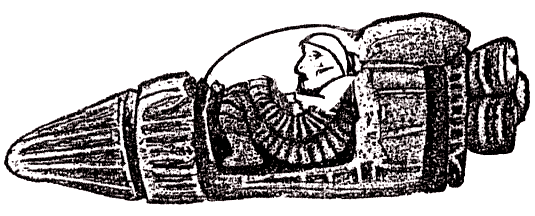|
Study 2:
D&M North - The Phoenix
In his book “The Stairway To Heaven,” author and historian Zecharia Sitchin asserts that an object the ancient Egyptians called a ‘Ben-Ben’ was an Anunnaki 1 space capsule.
Figure 1: Ancient
Egyptian stone model of Ben-Ben
At the north edge of the so-called D&M platform is what appears to be a very circular crater with a large, well formed rim but no obvious splash pattern surrounding it. Much of the surface of Cydonia looks like a circuit board or maze, however the area around the “crater” seemed even more “textured” than normal.
I began looking closely for another possible image. (View Figure 2 with a magnifying glass and you will see the incredible intricate and geometrical surface design.)
After rotating the Themis enhancement 45º clockwise, I began to see another half image appear. After doing a mirror flip of this half image near the edge of the platform what appeared was a wonderful depiction of the ancient Egyptian version of a Ben-Ben as the head of a bird about to, or in the process of, soaring into the air.
Since this image appears beside the crater, it is my contention that this may not be a crater at all but possibly a rocket or spaceship silo.
Notice the rounded base just like the Egyptian Ben-ben, the astronaut’s face within the Ben-Ben – a similar motif to the Egyptian stone model - and the intricate design on the body of the bird.
In the tomb of Huy who was viceroy in Nubia and the Sinai during the rein of the Egyptian pharaoh Tutankhamen circa 1300 BCE is the depiction of what Zecharia Sitchin describes as a rocket in a silo Figure 5.
Figure 5: From
Egyptian tomb of Huy circa 1300 BCE
You can see the Ben-Ben above ground surrounded by trees and worshippers while within the silo you can see the shaft of the craft. While no thrusters can be seen in this image they can clearly be seen in the sculpture in figure 6.
Figure 6: Spacecraft
sculpture circa 1000 BCE Zecharia Sitchin,
This artifact (circa 1000 BCE) was uncovered in 1973 during an archaeological dig in the ancient city of Tushpa, Turkey (now called Toprakkale.) The object is 23cm long, 9.5cm high 8cm wide and made of a soft yellowish brown stone. 3 The head was broken and missing so the area in white depicts what Sitchin believes it may have looked like.
Footnotes:
|
